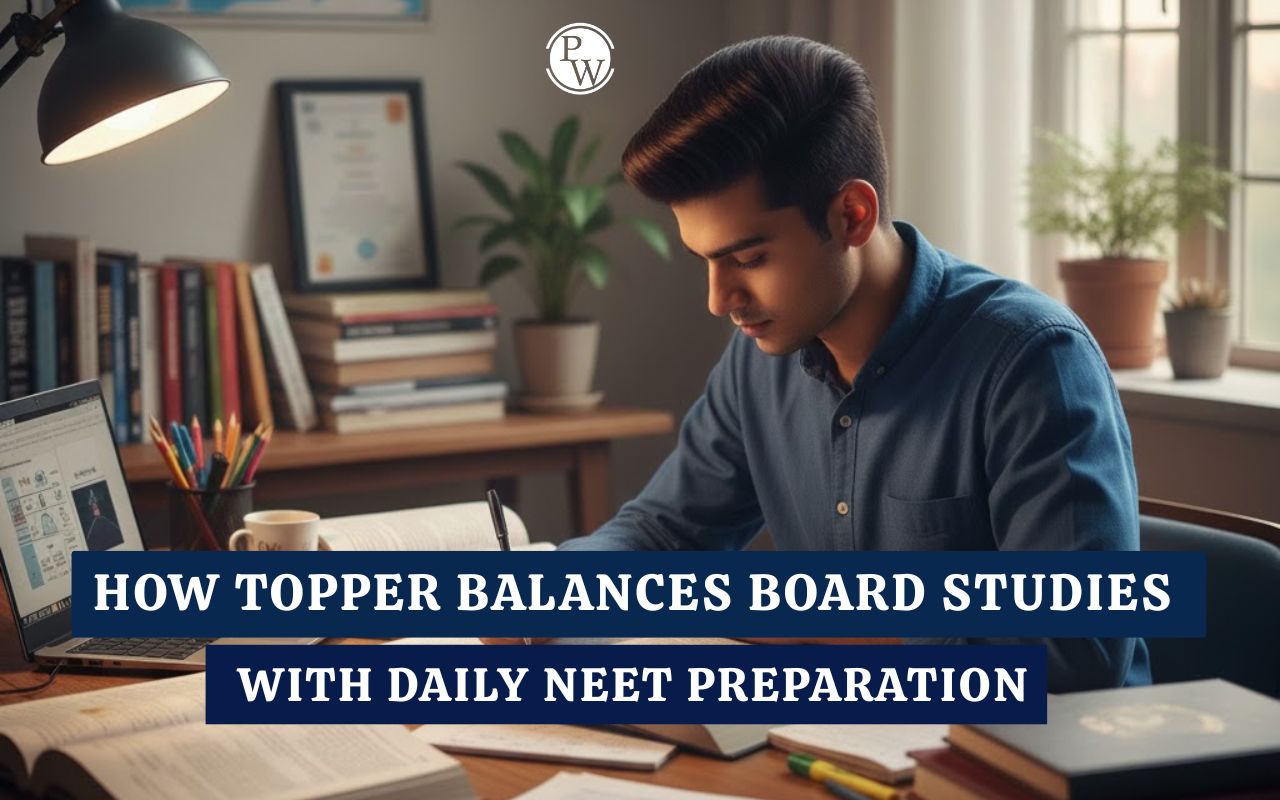
Difference between Estrogen and Progesterone: Hormones are natural chemicals with steroidal structures that function as messengers in the body. Specific organs produce them and are in charge of signalling to other organs or tissues in order to regulate various physiological functions. Steroid hormones like estrogen and progesterone play an important role in mammalian reproduction. Their primary role is to regulate uterine development and function by influencing specific gene activities. Estrogen regulates the menstrual cycle, while progesterone promotes pregnancy. Throughout pregnancy, these hormones work together to bring about necessary changes in the body. The following article discusses the difference between estrogen and progesterone in greater detail.
| NEET Biology Syllabus | NEET Biology Diagrams |
| NEET Biology MCQ | NEET Biology Chapter wise Weightage |
| NEET Biology Notes | NEET Previous Year Question papers |
Difference between Estrogen and Progesterone Overview
Hormones play an important role in the human reproductive system, helping to develop and maintain sexual characteristics in both men and women. Estrogen, while present in both genders, is most associated with the female reproductive system. It serves a vital function in shaping secondary sexual traits in females, such as breast development and the regulation of the menstrual cycle. The ovaries mostly produce estrogen, although small amounts are also made in the fat tissues and adrenal glands.
Throughout the menstrual cycle, estrogen levels fluctuate, influencing ovulation, or the release of an egg from the ovaries. Furthermore, estrogen promotes bone health and heart function while also influencing mood, emotions, and energy levels, making a significant contribution to overall well-being.
Similarly, progesterone, which exists in both sexes, is best known for its role in the female reproductive system. Progesterone, which is mostly produced in the ovaries after ovulation, helps to maintain pregnancy by nourishing the uterine lining and preparing the uterus for possible embryo implantation. In the absence of conception, declining progesterone levels cause the uterine lining to shed, resulting in menstruation.
Beyond its reproductive functions, progesterone has a calming effect on the brain and can influence mood. It regulates the menstrual cycle and is required for healthy pregnancies by working in conjunction with estrogen. Refer to the following article for a more complete understanding of the difference between estrogen and progesterone.
Difference between Estrogen and Progesterone
Estrogen and Progesterone are two key hormones in the female body. These hormones, known as steroids, play important roles in shaping various female characteristics. The ovaries, which generate egg cells, are critical organs for female reproductive health. Apart from egg production, the ovaries function as endocrine glands, releasing hormones, primarily estrogen and progesterone, that are essential for proper reproductive development and fertility. The table below explains the difference between estrogen and progesterone.
| Difference between Estrogen and Progesterone | ||
| Characteristics | Estrogen | Progesterone |
| Main Sources | Ovaries, placenta (during pregnancy), adrenal glands | Ovaries, placenta (during pregnancy), adrenal glands |
| Functions | Develops female secondary sexual characteristics, regulates menstrual cycle, supports pregnancy | Prepares uterine lining for embryo implantation, maintains pregnancy, helps regulate menstrual cycle |
| Effects on the Uterus | Stimulates uterine lining growth | Maintains uterine lining for pregnancy |
| Breast Development | Stimulates breast development and growth | Prepares breasts for milk production |
| Bone Density | Helps maintain bone density | Regulates bone density, prevents osteoporosis |
| Water Retention | Increases water retention in the body | Acts as a mild diuretic, reduces water retention |
| Mood and Emotions | Influences mood and emotional well-being | Has a calming effect, reduces anxiety and irritability |
| Libido (Sex Drive) | Increases libido in women | Effect on libido varies among women |
| Menstrual Cycle | Stimulates follicular phase of menstrual cycle | Initiates luteal phase of menstrual cycle |
| Support During Pregnancy | Supports early stages of pregnancy | Maintains pregnancy, prevents uterine contractions |
| Feedback Regulation | Inhibits release of FSH and LH through negative feedback | Inhibits release of FSH and LH, supports pregnancy through positive feedback |
Estrogen
Estrogen, a group of hormones, plays a vital role in regulating the growth, maturation, and functioning of the female reproductive system. Within this group, three primary hormones exist: estradiol, estrone, and estriol, with estradiol being the most abundant. The ovaries and the placenta are the main sources of estrogen production, although the adrenal glands and male testes also produce small amounts.
The estrogen consists of two types estrone and estradiol. The body produces estrone after menopause, estrone is a weaker form of estrogen that can be converted into other estrogen types as needed. Estradiol is the predominant estrogen during the reproductive years in females, estradiol is also produced by males. Elevated levels of estradiol may lead to various health issues such as osteoporosis, acne, depression, and decreased libido. Furthermore, high estradiol levels may increase the risk of breast and uterine cancer, while low levels may contribute to cardiovascular and weight-related concerns.
During the onset of puberty in females, estrogen production is stimulated by pituitary hormones. Estrogen serves several important functions in reproduction, including:
- Facilitating the growth and development of the ovaries during puberty.
- Supporting the development and maintenance of secondary sexual characteristics in females, such as changes in voice pitch, widening of hips, and breast growth.
- Working in tandem with gonadotropic hormones from the anterior pituitary gland to regulate the menstrual cycle.
- Encourages the uterine lining, or endometrium, to grow in preparation for a possible pregnancy.
- Maintaining the thickness and lubrication of the vaginal wall.
Progesterone
The female reproductive system produces the hormone progesterone, which is mainly in charge of controlling the state of the endometrium, or inner lining of the uterus. The placenta, ovaries, and adrenal glands produce it. Progestogens include progesterone as well as synthetic steroid hormones that mimic its effects, such as levonorgestrel.
The corpus luteum, formed after ovulation, is the main source of progesterone in the ovaries. Progesterone plays a crucial role in preparing the uterine lining to receive a fertilized egg for implantation and subsequent development. Additionally, it helps prevent spasms in the uterine muscles, which could otherwise lead to rejection of the implanted egg.
Progesterone, classified as a steroid hormone, is stimulated for synthesis by the luteinizing hormone acting on the corpus luteum. Throughout the female reproductive cycle, progesterone serves several important functions:
- It inhibits the release of follicular stimulating hormones (FSH), thus preventing the development of new follicles. This action helps stabilize the menstrual cycle and primes the body for potential pregnancy.
- Progesterone promotes the growth of blood vessels into the endometrium, leading to thickening of the uterine wall. This thicker lining is essential for successful embryo implantation and provides nourishment to the developing embryo through the placenta.
Physics Wallah provides the online coaching for NEET exam in India, with high-quality training at a reasonable price. NEET Online Courses by PW which have been skillfully designed to help students excel in their NEET exam preparation and succeed in the highly competitive NEET exam. Physics Wallah connects students with highly qualified teachers who specialize in explaining complicated ideas.
Difference between Estrogen and Progesterone FAQs
What role do estrogen and progesterone play in the body?
Which hormone, estrogen or progesterone, is better?
What is the function of progesterone in the female body?
Does estrogen increase breast size?
Is high estrogen beneficial for females?










